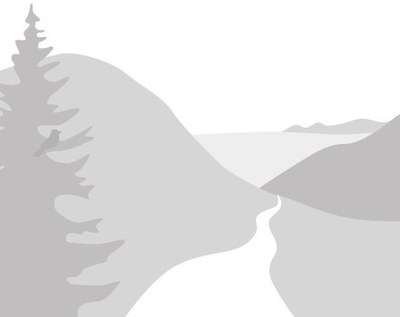
Trip Report
Backpack - Southeast Eagle Cap Wilderness Loop
A specular 5-day backpack through the southern uncrowded section of Oregon's Eagle Cap Wilderness.
- Mon, Jul 31, 2023 — Fri, Aug 4, 2023
- Backpack - Southeast Eagle Cap Wilderness Loop
- Southeast Wallowas Loop
- Backpacking
- Successful
-

- Road suitable for all vehicles
-
The east and west section of the trail had many downed trees, but passable. Several stream crossings required wading, but none over mid-calf depth. Snow on the high passes had recently melted before our trip, but could be an issue on earlier trips or snowier years.
A spectacular loop backpack, which exceeded our high expectations. Our group of 6 backpackers generally followed the route plan outlined in the leader notes.
After spending the night in Baker City, Oregon we drove about 1.5 hours to the trailhead.
Day 1: (July 31, 2023). We started at the East Eagle Trailhead and hiked to Hidden Lake along the East Fork of Eagle Creek. 9.6 miles, 3,123’ gain.
Consistent with the information received from the Ranger in Joseph, there were 50-100 downed trees on the route, but they could be circumvented. We saw 2 day hikers on this section, and no others. Our campsite at Hidden Lake was scenic and uncrowded. Bugs were present. Swimming was pleasant, and the water warm (for an alpine lake).
Day 2: We hiked to Mirror Lake, crossing Horton Pass, with a side trip up 9,572’ Eagle Cap. 10.0 miles, 3,914’ gain.
The Ranger report of conditions as of July 20 (about 2 weeks before our trip) said the descent from Horton Pass on the north side had large snowbanks, which could be circumvented with care. Only minor snowbanks existed on our trip.
Until Horton Pass, we saw only 2 people. After Horton Pass the route was much more populated. We camped at Mirror Lake, which was crowded.
Day 3: We hiked to camp along the South Fork of the Imnaha River. 11 miles, 3,369’ gain. We crossed Glacier Pass and traveled through the breathtaking Glacier Lake Basin. After swimming in icy Glacier Lake, we descended along the West Fork of the Wallowa River, passed Frazier Lake and Little Frazier Lake, and climbed over Hawkins Pass to descend into the stunning, flower-filled valley at the head of South Fork of the Imnaha River. Fields of lupine created an intoxicating scent.
During the day, we passed, and swam in Little Frazier Lake. This had been our originally-planned camp for the night, but we decided to continue over Hawkins Pass because the satellite weather report called for a chance of thunderstorms the next day. Based on our quick observations, Little Frazier Lake did not appear to offer good camping. After passing Frazier Lake, we saw only 4 people today.
Day 4: We hiked to Crater Lake along the South Fork of the Imnaha River and Cliff Creek, 8.4 miles, 1,922’ gain. We arrived at Crater Lake just in time to set up our tents before rain and thunder arrived. We received no ranger reports for this section of trail, but encountered substantial downed trees, but we were able to pass all without undue difficulty. We saw no people today.
Day 5: On our last day, we returned to the East Eagle Trailhead, 6.2 miles, 390’ gain, and the end of our trip. The descent to the trailhead was brushy and soaking. After a stop for a filling and tasty late breakfast in Baker City, we drove home the same day, arriving in the Seattle area about 8:00 PM.
Our trip, in the first week of August, seemed to hit this year’s sweet spot for this route - late enough for the snow to melt on the high passes, and early enough for the flowers to still be in bloom.
Cheryl Talbert created a highly- recommended annotated photo album for this trip here.
 Richard Lambe
Richard Lambe